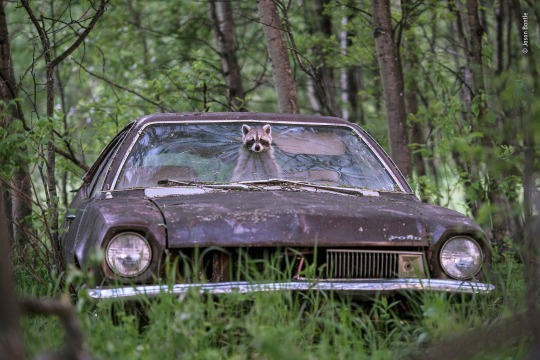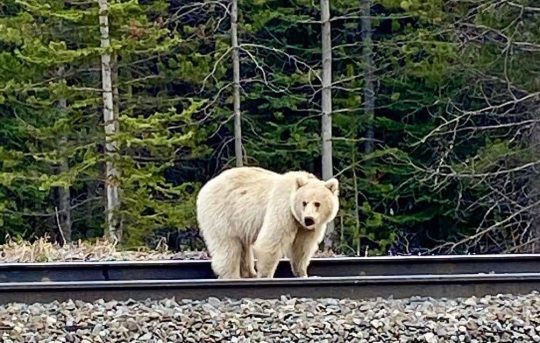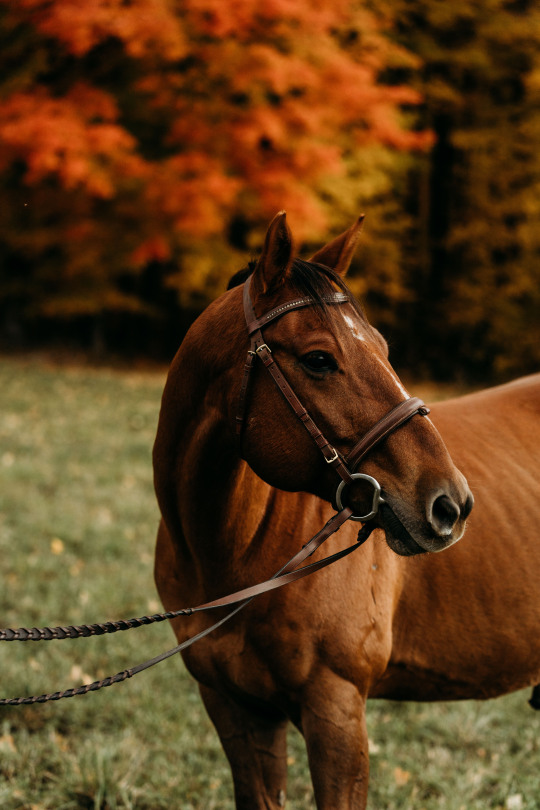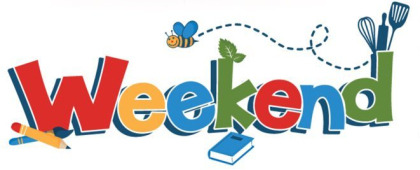#Jason Bantle
Explore tagged Tumblr posts
Text

An ever-adaptable raccoon pokes her bandit-masked face out of a 1970s Ford Pinto on a deserted farm in Saskatchewan, Canada. In the back seat, her five playful kits trill with excitement, 2019 - by Jason Bantle, Canadian
440 notes
·
View notes
Text

A raccoon raises her family in a 1970’s Pinto on a deserted farm in Saskatchewan, Canada. The opening in the windshield is small enough to keep out the coyotes.
Photo by Jason Bantle
19 notes
·
View notes
Photo

Little Bear Cub In Deep Thought
By Jason Leo Bantle
814 notes
·
View notes
Text

Nakoda Grizzly Bear. Very rare.
A wildlife photographer says he's worried about a rare white grizzly living in mountain parks in Alberta and British Columbia after watching people get too close to it and seeing it run across a highway.
The bear, which has been nicknamed Nakoda by locals, was first revealed publicly after it was spotted in Banff National Park in Alberta two months ago.
Rare sighting of white grizzly a birthday treat for Canmore family
Parks Canada said it's not an albino, but a natural colour phase variation that makes the 3 1/2-year-old bear white.
"This colour phase variation is unusual for grizzly bears but has been seen before," the agency said in a statement. "Grizzly bears are typically brown, black or blonde; however there have been records of grizzly bears with a white colour phase variation."
Photographer Jason Bantle, who's also a biologist.
25 notes
·
View notes
Photo

589 notes
·
View notes
Photo

Canadian wildlife photographer Jason Bantle has spent countless evenings quietly camping out in the Saskatchewan wilderness trying to snap the perfect photo of a momma raccoon emerging from the 1970′s Ford Pinto she's been raising her kits in.
Bantle's photo, called Lucky Break, made the prestigious "highly commended" list at the U.K. Natural Museum of History's Wildlife Photographer of the Year awards, and will be featured at the museum's exhibit running from Oct. 18, 2019, to May 31, 2020, in London.
118 notes
·
View notes
Photo



At the Office
Midsomer Murders - Early Seasons
#midsomer murders#tom barnaby#gavin troy#dan scott#gail stephens#ben jones#season 1#season 8#season 13#faithful unto death#bantling boy#not in my back yard#john nettles#daniel casey#john hopkins#jason hughes#kirsty dillon
38 notes
·
View notes
Photo

Lucky Break by Jason Bantle
The back seat was an ideal den for the raccoon and her five cubs as the only entrance – through a blunt-edged hole in the glass – was large enough for her but too small for predators such as coyotes.
Raccoons tend to make their dens in hollow trees or rock crevices but they are extremely adaptable. Emerging at dusk, this mother will spend the night foraging for food for herself and her young. Raccoons are opportunistic and will eat anything from fruit and nuts to the contents of rubbish bins.
32 notes
·
View notes
Text

✘ BIRDS OF PREY: SENTENCE STARTERS.
@luthortm said: ❛ it took losing something i truly love to see that the target on my back was bigger than i thought. ❜ -- sheila ( >:3c )

His thoughts are whirling, his insides are sizzling. Jason is at a war with himself — he shouldn’t be here, she shouldn’t be here. Both of them should be buried six feet under and biting the dust. And yet here they are. Reunited again.
Unable to muster up the courage to look her in the eye, he blankly stares at his reflection in the red helmet resting in his hands. Another tornado of dilemmas and questions plays havoc with his dizzy head.
Was it all worth the trouble? The pain and the agony that keeps him company to this very day? The emptiness, the hollowness, the everlasting moments of fear— He could put a thousand of labels of those stepping stones he tripped over. But he still finds himself at loss for words. When the white noise in his mind dies down for a second, there are only these few words echoing within his skull: SHE IS YOUR MOTHER.
She never meant for any of this to happen, right?
The corners of his eyes redden and they begin to itch. Before he knows it, tears well up and a single drop rolls down his cheek ( MOM, it’s not your fault! ).
It’s not alleviating, not at all. He feels worse and she is not helping.
Jason holds the helmet adorned with multiple scratches close to his chest; sometimes this helps. As much as he wants to walk away without sparing her a glance, he also wants to hug her because it’s been so long.
Glassy eyes dart at Sheila and his muscles tense up. “Good, as it should be,” he hissed through gritted teeth. No, he shouldn’t be gruff— After all, she’s his mother. She doesn’t deserve a temper tantrum worthy of a bratty bantling. Or does she? “But love does seem like a big word.”
1 note
·
View note
Text

“Lucky Break” by Jason Bantle, Canada
13 notes
·
View notes
Link
Some of them:

‘Lucky Break' (Photo: Jason Bantle/Wildlife Photographer of the Year). An ever-adaptable raccoon pokes her bandit-masked face out of a 1970s Ford Pinto on a deserted farm in Saskatchewan, Canada. In the back seat, her five playful kits trill with excitement. It was a sentiment shared by Jason Bantle, waiting silently in a nearby hide, who had been hoping for this chance every summer for several years. The only access into the car was through the small hole in the cracked safety glass of the windscreen. The gap was blunt‑edged but too narrow a fit for a coyote (the primary predator of raccoons in the area), making this an ideal place for a mother raccoon to raise a family.

Sleeping like a Weddell' (Photo: Ralf Schneider/Wildlife Photographer of the Year). Hugging its flippers tight to its body, the Weddell seal closed its eyes and appeared to fall into a deep sleep. Lying on fast ice (ice attached to land) off Larsen Harbour, South Georgia, it was relatively safe from its predators — killer whales and leopard seals — and so could completely relax and digest. Weddell seals are the world’s most southerly breeding mammals, populating inshore habitats around the Antarctic continent.

'If Penguins Could Fly' (Photo: Eduardo Del Álamo/Wildlife Photographer of the Year). A gentoo penguin — the fastest underwater swimmer of all penguins — flees for its life as a leopard seal bursts out of the water. Eduardo Del Álamo was expecting it. He had spotted the penguin, resting on a fragment of broken ice. But he had also seen the leopard seal patrolling off the Antarctic Peninsula coast, close to the gentoo’s colony on Cuverville Island. As Eduardo’s inflatable headed towards the penguin, the seal passed directly beneath the boat. Moments later, it surged out of the water, mouth open. The penguin made it off the ice, but the seal now seemed to turn the hunt into a game.

'Big Cat and Dog Spat' (Photo: Peter Haygarth/Wildlife Photographer of the Year). In a rare encounter, a lone male cheetah is set upon by a pack of African wild dogs. Peter Haygarth had been following the dogs by vehicle as they hunted in Zimanga Private Game Reserve, KwaZulu-Natal, South Africa. A warthog had just escaped the pack when the leading dogs came across the big cat. At first, the dogs were wary, but as the rest of the 12-strong pack arrived, their confidence grew, and they began to encircle the cat, chirping with excitement. The elderly cheetah hissed and lunged back at the mob, his left ear tattered, the right one pinned back in the ruckus. As dust flew in the morning light, Peter kept his focus on the cat’s face. In a few minutes the spat was over as the cheetah fled.

‘Touching Trust' (Photo: Thomas P Peschak/Wildlife Photographer of the Year). A curious young gray whale approaches a pair of hands reaching down from a tourist boat. In San Ignacio Lagoon, on the coast of Mexico’s Baja California, baby grey whales and their mothers actively seek contact with people for a head scratch or back rub. The lagoon is one of three that comprise a gray whale nursery and sanctuary — a key winter breeding ground for this surviving breeding population of grey whales, the eastern North Pacific ones.
8 notes
·
View notes
Text
Artists and Art Pieces are Nature Interpreters
Nature, the land, the sky, animals, the weather, plants, and water surrounds us, inspires, and influences our actions. Many artists draw inspiration from nature, use nature as their medium, use nature to create a theme in their work, and use it to help them develop a deeper understanding of the world and themselves (Iwinski, 2021). We consume art every single day, on our phones, the radio, in books, on the television, seeing art pieces in public, and more. Everyone enjoys art in some form or another, I enjoy television, photography, and music. How do you enjoy art? Art, just like nature, is important to spiritual and mental well-being, it promotes engagement with your surroundings which can help with overall well-being (Mental Health, 2019). As we are starting to understand the link between art and nature, and the powerful impact they have on society it is now important to introduce how interpretation plays a role.
Just like those who interpret the environment, some interpret art. Whether it be ancient or modern art pieces they help viewers understand the message the artist is trying to convey or to understand the elements of a piece and how they interact, regardless of the artist's intent (Lin). However, regarding art about nature, I also believe that the artists and the art pieces themselves are the interpreters and that an additional interpreter (tour guide) is not required. When artists are depicting nature in their work they are trying to capture the beauty of an extraordinary moment in a singular painting, photograph, or 3-minute song. They are interpreting nature without using words, or without using pictures, and yet they have mastered the ability to convey emotion, knowledge, and intrigue into their pieces. The question that prompted this week's blog post was “Who are you to interpret nature through art?” This is a bit confusing at first glance, but what I think it’s saying is, how can you interpret nature through art, because the artist and the art itself are the interpreters, so what use is there for another interpreter. And what I love that is unique about art being the interpreter is that everyone’s interests and needs are met. Whether they are visual, kinesthetic, or auditory learners everyone can find an art form that they understand best and receive the most benefits from (Beck et al., 2018).
Speaking of beauty, how do you interpret “the gift of beauty”? In my opinion, beauty is subjective and everyone perceives, interprets, and finds beauty in different places. I love nature, specifically wildlife photography. The way they can capture the beauty of animals, their environment, their emotions, and how they live is just mesmerizing and something I would spend all day looking at. My favourite Canadian photographer is Jason Leo Bantle because he can capture the beauty of Canada through wildlife photography. He and his images give you insights into nature that you otherwise would not be able to experience, and is interpreting the wild parts of nature to the public.

Not wildlife photography, but photography of animals is so beautiful to me. This is a picture of my Quarter horse gelding. Taken my Seafind Photography, rights owned by Julia Pridmore.
Interpretation and art are interesting topics that I feel many people have different opinions on. I would like to note that, unlike other blog posts, I’ve made I did not talk about myself and how I am an interpreter because I don’t view myself as an artist, I like to take photos on my phone and occasionally paint with friends but to me, this does not make me an artist. I love to engage, appreciate, and view art and that is why I talked more about the view experience and interpretation vs being the interpreter.
Beck, L., Cable, T. T., & Knudson, D. M. (2018). Interpreting cultural and natural heritage: for a better world. Sagamore Venture.
Iwinski, S. (2021, October 14). The importance of nature in art. Humans in Nature. https://humansinnature.org/2021/10/14/the-importance-of-nature-in-art/
Mental Health Foundation. How arts can help improve your mental health. (2019, June 25). https://www.mentalhealth.org.uk/explore-mental-health/blogs/how-arts-can-help- improve-your-mental-health#:~:text=The%20arts'%20 valuable%20role%20in%20mental%20health%20is%20being%20recognised&text=It%20can%20help%20to%20boost,alleviates%20anxiety%2C%20depression%20and%20stress.
Lin, S. (n.d). Art and Interpretation. The Internet Encyclopedia of Philosophy. ISSN 2161-0002. https://iep.utm.edu/art-and-interpretation/#:~:text=Interpretation%20in%20art%20refers%20to,the%20interpretation%20of%20the%20work.
1 note
·
View note
Text
Good Saturday morn, and welcome to the …

I have two fun things planned for today. First, this may come as a big surprise to you, but Filosofa is a big lover of critters! Shocked, aren’t you?
Wildlife Photographer of the Year is the largest wildlife photography competition in the world. It is an annual international wildlife photography competition owned by the Natural History Museum. The first competition was held in 1964, with three categories and around 600 entries. By 2008, the competition had grown to over 32,000 entries from 3100 photographers in 82 countries!
There are far too many for me to post here, so I have picked only a few of my favourites this year, but your can see more of the winners at Bored Panda, if you’re interested.
This first one is the #1 winner, titled “The Moment”, and taken by Yongqing Bao of China.
This Himalayan marmot was not long out of hibernation when it was surprised by a mother Tibetan fox with three hungry cubs to feed. With lightning-fast reactions, Yongqing captured the attack – the power of the predator baring her teeth, the terror of her prey, the intensity of life and death written on their faces.
“Bee Line” by Frank Deschandol of France
Bees buzzed in the long grass around the lake as evening fell. To Frank’s delight, they were settling down in little rows along the stems. These were solitary bees, probably males, gathering for the night in suitable resting places, while the females occupied nests they had built nearby.
“Land Of The Eagle” By Audun Rikardsen of Norway
Audun carefully positioned this tree branch, hoping it would make a perfect lookout for a golden eagle. He set up a camera trap and occasionally left road-kill carrion nearby. Very gradually, over the next three years, this eagle started to use the branch to survey its coastal realm. Audun captured its power as it came in to land, talons outstretched.
“Lucky Break” By Jason Bantle of Canada
A raccoon poked her head out of an abandoned car and paused to assess her surroundings, allowing Jason just enough time to use a long exposure in the twilight. The back seat was an ideal den for the raccoon and her five cubs as the only entrance – through a blunt-edged hole in the glass – was large enough for her but too small for predators such as coyotes.
“Portrait Of A Mother” By Ingo Arndt, of Germany
When you are eye to eye with a wild puma,’ says Ingo, ‘excitement is guaranteed.’ Tracking these elusive cats on foot meant lugging heavy gear long distances, often in freezing temperatures and unrelenting winds. Mutual respect gradually earned him the trust of a female and her cubs, allowing him to capture this intimate family portrait.
“Cool Drink” By Diana Rebman of the U.S.
Despite the bitterly cold temperature of minus 20 degrees Celsius, Diana spent hours mesmerised by what she described as the ‘well-choreographed dance’ of a group of long-tailed tits taking turns to peck at an icicle. With the fast movement of the birds and her fingers feeling like blocks of ice, capturing their behaviour was no easy task.
“If Penguins Could Fly” By Eduardo Del Álamo of Spain
A gentoo penguin flees for its life as a leopard seal bursts out of the water. Eduardo was expecting it. He had noticed the penguin resting on a fragment of broken ice and watched the seal swim back and forth. ‘Moments later, the seal flew out of the water, mouth open,’ he says.
“The Huddle” By Stefan Christmann of Germany
More than 5,000 male emperor penguins huddle on the sea ice, backs to the wind, heads down, sharing body heat. ‘It was a calm day,’ says Stefan, ‘but when I took off my gloves to focus the lens, the cold felt like needles piercing my fingertips.’ Antarctic winters are fierce, with temperatures below minus 40 degrees Celsius.
“Big Cat And Dog Spat” By Peter Haygarth of the United Kingdom
In a rare encounter, a lone male cheetah is set upon by a pack of African wild dogs. At first the dogs were wary, but as the rest of their 12-strong pack arrived their confidence grew. They began to encircle and probe the big cat, chirping with excitement. It was all over a few minutes later, when the cheetah fled.
“Night Glow” By Cruz Erdmann of New Zealand (in the age 11-14 category)
Cruz was on a night dive with his dad when he saw a pair of bigfin reef squid in the shallow water. One swam off but Cruz quickly adjusted his camera and strobe settings, knowing that the opportunity was too good to miss. He shot four frames of the remaining squid before it too disappeared into the inky blackness.
“Face Of Deception” By Ripan Biswas of India
Ripan was photographing a red weaver ant colony when he spotted this slightly strange individual. It may have the face of an ant but its eight legs give it away – on closer inspection Ripan discovered that it was an ant-mimicking crab spider. By reverse mounting his lens, Ripan converted it to a macro capable of taking extreme close-ups.
Some pretty awesome shots there, don’t you think?
And my second surprise … you all remember Steve Irwin, aka the Crocodile Hunter? He hosted a television series that aired on Animal Planet, becoming the network’s highest-rated series at the time (1997-2004).
Steve tragically died in Batt Reef, Australia, in 2006 when a stingray’s barb pierced his heart. But, his children, Bindi and Robert, are both lovers of wildlife and conservationists. Bindi is an Australian television personality and conservationist. When she was 9, she hosted Bindi the Jungle Girl, a children’s wildlife documentary TV series. Son Robert is an Australian television personality and wildlife photographer. He hosts Robert’s Real Life Adventures, a program on his family’s zoo’s internal TV network. He co-hosted the Discovery Kids Channel TV series Wild But True and co-created the book series Robert Irwin: Dinosaur Hunter, and currently stars on the Animal Planet series Crikey! It’s the Irwins with his mother, Terri, and sister, Bindi.
In February 2017, young Robert, then age 13, made his late-night television debut when he appeared on NBC’s The Tonight Show Starring Jimmy Fallon. This clip will warm your heart, make you say “Awwwwww”, and make you laugh, all at once. Who could ask for anything more? And my youngest reader, Benjamin, will enjoy this, for one of his Hallowe’en costumes was the Crocodile Hunter!
youtube
And that’s all I’ve got for this morning, my friends! Go forth and have a wonderful weekend! Enjoy every minute … remember, Monday is lurking right ‘round the corner!

Saturday Surprise — Wildlife and … Crocodile Hunter Junior! Good Saturday morn, and welcome to the ...I have two fun things planned for today. First, this may come as a big surprise to you, but Filosofa is a big lover of critters!
#Bindi Irwin#Jimmy Fallon#Robert Irwin#Steve Irwin#The Crocodile Hunter#weekend!#Wildlife Photographer of the Year 2019
0 notes


